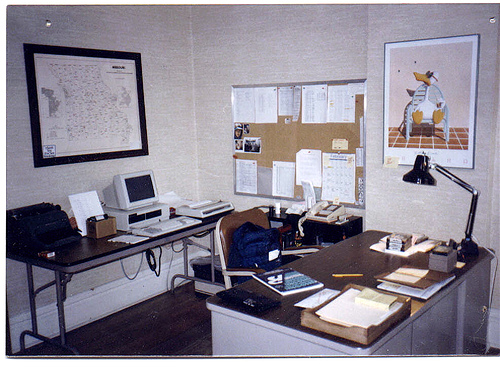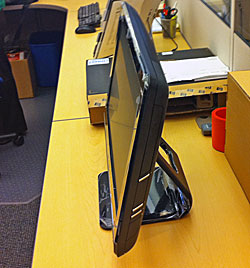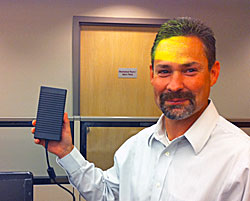
Five years ago I used this elaborate timeline to illustrate where I saw myself in relation to others in terms of technology awareness. A little out front (at the time) of most of our company… waaay behind the Smart Kids.
For much of the past 15 years I’ve been annoying people (mostly at work) with the latest gadget or –more recently– app. There were early adopters like me; others who would get on board once they clearly saw some proven value to their current job; and still others who jammed their fingers in their ears, chanting “la la la la la la I can’t HEAR you!”
This group always referred to “the Internet thing,” and to this day think Twitter is about what you had for lunch.
But something has changed. People are starting stop by my office or my table at the Coffee Zone and ask for a crash course in all this stuff I’ve been yapping about. It’s as though they woke up one morning and realized, “Shit! I’m way behind!”
Let me hasten to add, there is NOTHING I know that any reasonably intelligent person can’t pick up. But just as you can learn to speek Italian from a series of CD’s, you won’t really understand the language until you live in Genoa for a few years. It’s a cultural thing.
If I had to guess at what has brought this on –if, indeed, something has changed– I’d say it’s the iPhone and the iPad. The web has moved from your desktop (which you leave behind every night at 5 o’clock) to your pocket.
These latter day Luddites are hearing more and more expressions (from customers!) the meaning of which they have only the vaguest idea.
I’m doing my best to purge any “I told you so” from my thinking, but the simple truth is, a lot of these folks won’t catch up. They’re trapped on the wrong side of the digital divide. By the time they scramble up and over… everyone will have moved on.
Ehi, aspetta per me voi ragazzi!



 And then Phil dug out the HP’s power supply and I felt so bad for the rep I wanted to give him a hug. This thing is literally the size of a brick. The only good thing about the monster is you can rest your feet on it.
And then Phil dug out the HP’s power supply and I felt so bad for the rep I wanted to give him a hug. This thing is literally the size of a brick. The only good thing about the monster is you can rest your feet on it.